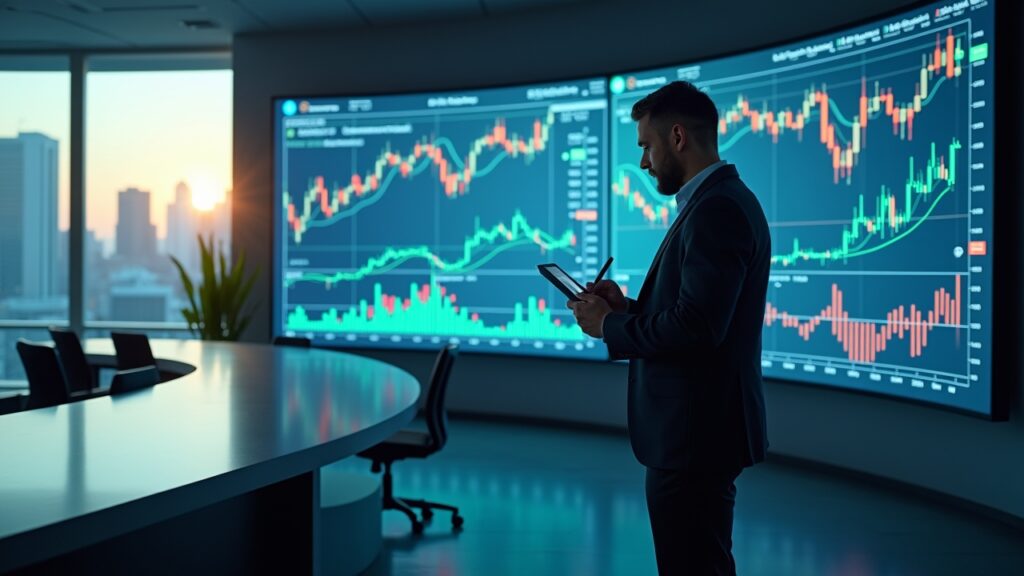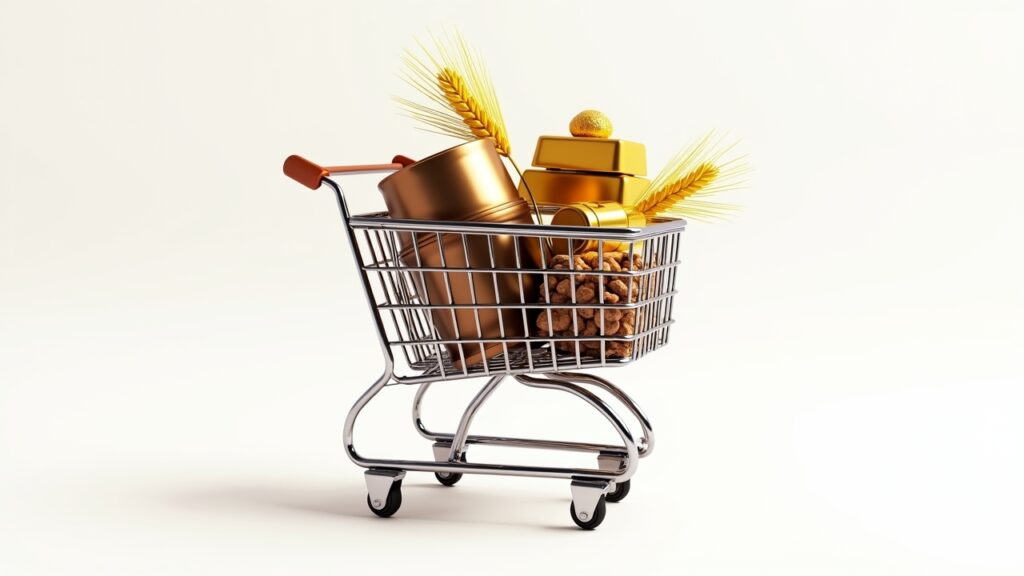Advertisements
Did you know that the global commodities market trades over $20 trillion annually? Yeah, that number blew my mind too! When I first heard about commodities investing back in 2015, I thought it was just for Wall Street bigwigs in fancy suits. Boy, was I wrong.
I’ll never forget my first attempt at trading commodities. Picture this: me, sitting at my kitchen table with three monitors (because that’s what the pros do, right?), ready to conquer the gold market. Let’s just say I learned real quick why they call it “speculation” and not “guaranteed money printing.”
But here’s the thing – commodities investing isn’t as scary as it seems once you understand the basics. And trust me, after losing a chunk of change on my first oil futures contract, I made it my mission to figure this stuff out.
What Are Commodities Anyway?

Commodities are basically raw materials or primary agricultural products that can be bought and sold. We’re talking about stuff like gold, silver, crude oil, natural gas, wheat, corn, and even lean hogs (yes, that’s a real thing!).
I remember explaining this to my neighbor once, and he goes, “So you’re telling me I can invest in bacon?” Not exactly, but kinda! The beauty of commodities is that they’re tangible assets – things you can actually touch and feel, unlike stocks which are just pieces of paper representing ownership.
These physical assets get traded on exchanges like the Chicago Mercantile Exchange (CME) or the Intercontinental Exchange (ICE). The prices fluctuate based on supply and demand, weather patterns, geopolitical events, and about a million other factors that’ll make your head spin.
Why I Started Investing in Commodities (Hint: Diversification)
After watching my stock portfolio take a beating during a market downturn, I realized I needed to spread my risk around. That’s when commodities caught my attention. They often move independently from stocks and bonds, which means when the stock market’s having a bad day, your gold investment might be doing just fine.
Plus, commodities can be a great hedge against inflation. Remember when gas prices went through the roof a couple years back? Well, if you’d been invested in oil futures, you would’ve been smiling at the pump instead of crying.
The correlation between commodities and traditional investments is usually pretty low. This negative correlation became my best friend when building a balanced portfolio.
Different Ways to Invest in Commodities
Alright, so there’s more than one way to skin this cat. When I started out, I thought buying physical gold bars was the only option (and honestly, there’s something cool about having actual gold in your safe). But there’s actually several approaches:
Physical Commodities
This is exactly what it sounds like – buying the actual commodity. I’ve got a small collection of silver coins and a couple gold bars tucked away. The downside? Storage and insurance costs can eat into your profits.
Futures Contracts
Oh boy, futures. These are agreements to buy or sell a commodity at a specific price on a future date. They’re leveraged, which means you can control a large amount with relatively little money. Sounds great until you realize losses are magnified too (learned that the hard way).
ETFs and ETNs
Exchange-traded funds and notes are probably the easiest way for beginners to get started. The SPDR Gold Trust (GLD) was my first commodity investment, and it trades just like a stock. No need to worry about storage or futures contracts expiring.
Commodity Stocks
Instead of buying oil directly, you could invest in companies like Exxon or Chevron. Mining stocks for precious metals exposure is another option. Just remember, you’re also betting on the company’s management, not just the commodity price.
My Hard-Learned Lessons and Tips
After seven years of trading commodities, I’ve made pretty much every mistake in the book. Here’s what I wish someone had told me from the start:
- Start small – seriously, don’t bet the farm on your first trade
- Understand contango and backwardation in futures markets (Google it, trust me)
- Keep an eye on the dollar – when it’s strong, commodity prices usually fall
- Weather reports are your friend if you’re trading agricultural commodities
- Set stop-losses – commodities can be volatile as heck
- Don’t try to catch a falling knife – wait for trends to establish
One time, I thought I was being smart by going all-in on natural gas futures before winter. Turns out it was the warmest winter on record. Ouch. Diversification within commodities is just as important as diversifying your overall portfolio.
The Risks Nobody Talks About
Look, I’m gonna be straight with you – commodities investing ain’t for the faint of heart. The volatility can be insane. I’ve seen my crude oil position swing 10% in a single day. That’s exciting when it goes your way, terrifying when it doesn’t.
Political risk is huge too. Remember when certain countries imposed sanctions that affected commodity prices? Or when OPEC decided to flood the market with oil? These geopolitical events can wreck your position faster than you can say “margin call.”
There’s also the complexity factor. Understanding futures contracts, margin requirements, and roll yields takes time. I spent months reading everything I could find on Investopedia before feeling remotely comfortable.
Making Commodities Work in Your Portfolio

So should you invest in commodities? That depends on your goals, risk tolerance, and how much time you’re willing to dedicate to learning. For me, they’ve become about 10-15% of my total portfolio – enough to provide diversification benefits without keeping me up at night.
If you’re just starting out, consider beginning with a broad commodities ETF. Get a feel for how these markets move before diving into individual commodities or futures contracts. And please, please, please – don’t invest money you can’t afford to lose.
The commodities market has taught me patience, discipline, and the importance of doing your homework. It’s also given me some great dinner party stories (like the time I accidentally took delivery of 1,000 barrels of oil… just kidding, but that’s a real fear for futures traders!).
Whether you’re looking to hedge against inflation, diversify your portfolio, or just want to understand what all the fuss is about, commodities investing can be a valuable tool in your financial toolkit. Just remember to start slow, stay educated, and never invest based on a hot tip from your brother-in-law. Ready to explore more investment strategies and financial wisdom? Check out other insightful articles on Plan Wealth to continue your journey toward financial success!




[…] your returns, why not explore more investment strategies at Plan Wealth? We’ve got plenty more insights on building wealth your own […]